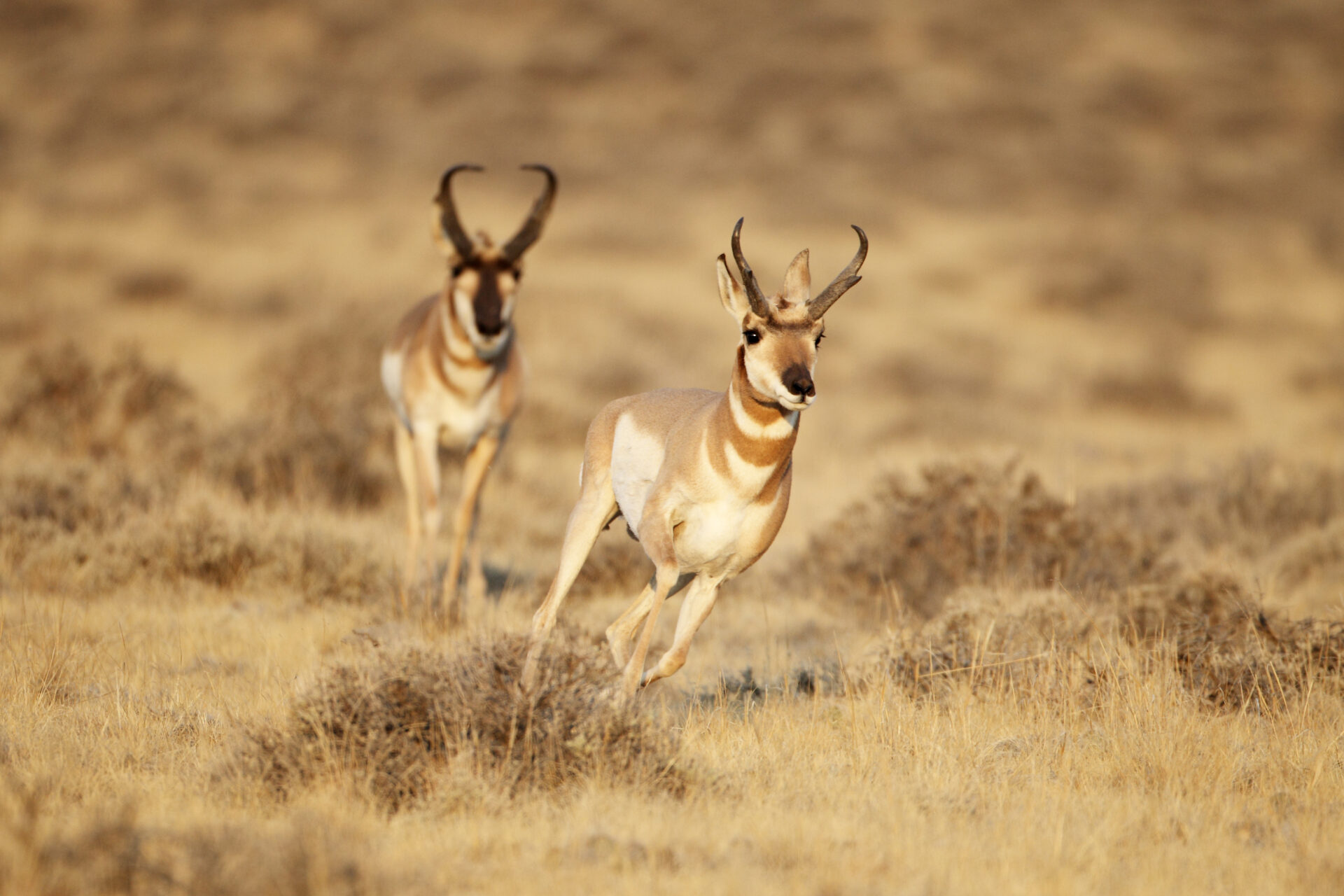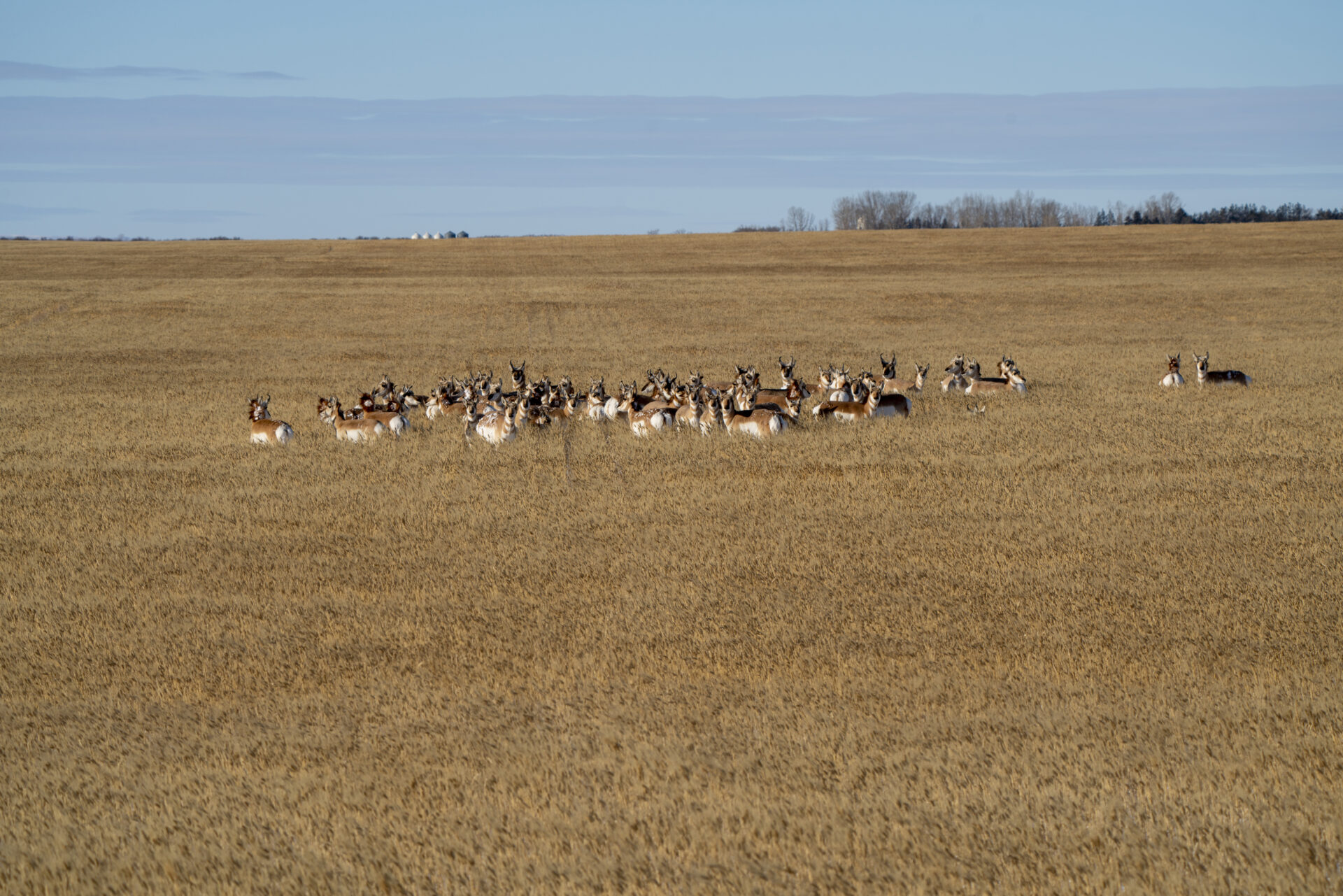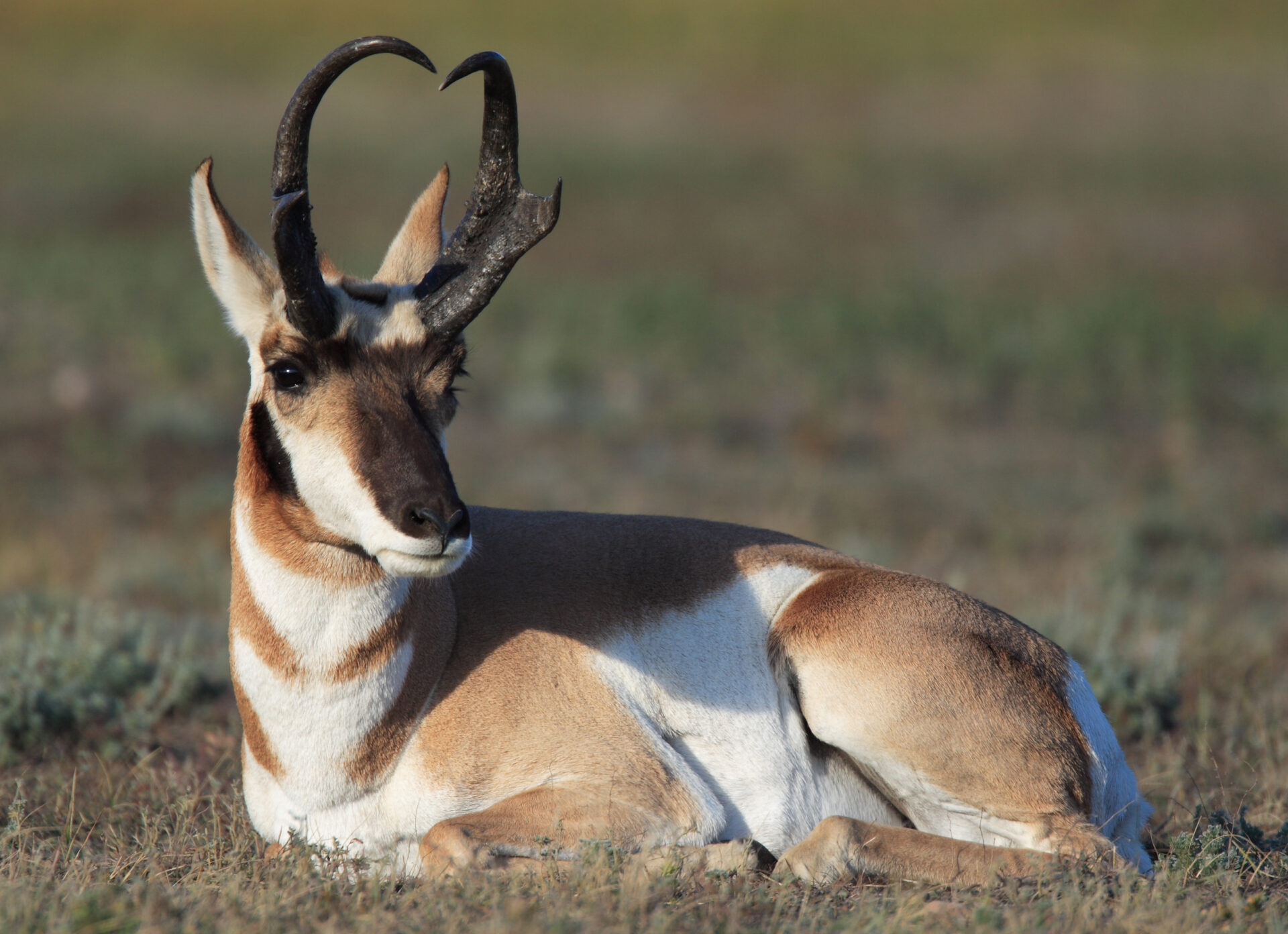I was asked the other day what my favourite animal is to hunt. After some thought, I replied, “In North America, while sheep are the most challenging and moose are the most rewarding, pronghorn antelope are unquestionably the most fun.” The pronghorn antelope is one unique critter. It grows and sheds its horns each year, unlike other horned animals, such as mountain goats or sheep, and, even more interesting, they are the only horned animal in the world to do so. They have fabulous eyesight and can outrun any animal this side of the Atlantic. And, while the African cheetah is faster on a short run, they can out distance a cheetah by sustaining their speed longer. Remarkably, they can run 88.5 kilometres an hour for 0.8 kilometres or 56 kilometres an hour for six kilometres. That is blinding enduring speed!
Advertisement

The pronghorn has existed in North America for a million years. Despite this longevity, their numbers had tumbled in the latter part of the 19th century to the point where their disappearance from the west became a possibility. Thankfully, sound management strategies turned the tide, and it is now estimated that there are about a million pronghorn in North America, covering an expansive range that extends from southern Saskatchewan and Alberta into the United States through Montana, Idaho, Utah, Nevada, Arizona, Wyoming, Colorado, New Mexico, Washington, southwestern Minnesota, central Texas, southern California, northern Baja California Sur, to Sonora and San Luis Potosi in northern Mexico.
Pronghorn Appeal & Licensing
Antelope are a fun hunt that just about anyone can enjoy. The hunts are not overly taxing, success is usually high, the weather is often cooperative and, if you hunt in high-density areas, seeing more than 100 antelope a day is standard fare. Just having the opportunity to see game in these kinds of numbers is worth the hunt alone. If that doesn’t capture your imagination, the fact that you frequently hunt these speedsters in the wide-open spaces of the great prairie grasslands, where the smell of sage still lingers, surely will.
Advertisement
One does not have to travel far to enjoy an antelope hunt. Our neighbours immediately to the south and east of us all have antelope. In Alberta, for example, a non-resident Canadian can obtain a trophy antelope special license through an outfitter or by draw. But for sheer numbers, with a population of 400,000 antelope, Wyoming is hard to beat. It also tops the list of Boone & Crocket record book entries with 1,059, all but doubling its closest competitor New Mexico at 561.
But non-resident tags are not always easy to come by, so planning is a must. Most often they are only available through a draw and applications have deadlines, so plan at least a year ahead of time. Some states use a preference point system, so the more points you acquire, the better the odds. Other states, such as Wyoming, additionally offer the non-resident hunter the option of improving the odds by applying for a special license. This type of option is usually more expensive, so less hunters apply. Meanwhile, in other states, landowners are issued tags, but these are usually sold along with a landowner hunt or by an outfitter who has purchased the tags from the landowner. If this is your first antelope hunt, I would suggest finding a reputable guide/outfitter in a high antelope density area and book a hunt with them. They often have access to private land that resident hunters do not, making the hunt more enjoyable and frequently more successful. Web research and a booking agent can be very helpful here.
Advertisement

Hunt Strategies
I have hunted antelope in western Canada and the United States, from New Mexico to Montana, and hunt strategies don’t vary that much. As with most species, the first step is locating the game you seek. This is where the fun in antelope hunting begins. They are a critter of the wide-open spaces and, as a result, are generally not all that difficult to find. It is just a matter of glassing a lot of country from vantage points that don’t give your location away. Antelope have superb vision, so any movement within their periphery will catch their immediate attention, even at distances you might assume are safe. Subsequently, when glassing, glass from below ridgelines or, if necessary, carefully sneak up to a hilltop or ridgeline with the use of natural cover like a rock outcrop or even a fence line to conceal your approach, and avoid being skylined at all costs. A good pair of binoculars is a must and, if after thoroughly glassing an area you don’t find anything, move on to a new location and repeat the process until a herd or a buck is located.
Next, determine trophy quality with the use of a good spotting scope. A spotting scope can save a lot of shoe leather by affirming whether the buck is worth setting off on a long hike for or whether it is time to move on.
If the buck is of the quality you seek, it is then time to organize a stalk. But that can prove to be a lot more difficult to achieve than it initially appears. Not only do antelope possess keen eyes, but also the country they occupy frequently offers very little in the way of concealment for a stalk. This is where the second element in the fun of antelope hunting begins. While I have frequently been able to use various natural features, such draws, hills or even sagebrush, to stalk to within range, that has not always been the case. For these instances, where the buck is just unapproachable, here are some alternate strategies to consider. I have covered myself with camo burlap sacking and then crawled on my hands and knees until I was within range. During my approach, I would always keep an eye on the buck through frequent stops and if it began to show signs of getting nervous and I was within range, I would make my shot. If not, I would slow the process down even further until it relaxed again. A pair of kneepads and leather gloves can be a real asset here.

I have also used calls during and around the rut. There is usually about a 10-day period around the rut when a buck will respond to a call. And calling just may save the day as it did for me with one particularly wary buck in Montana a few years back. Antelope decoys can also prove useful. A buck decoy during the rut will motivate a buck into attempting to run an intruder out of its domain and a doe decoy can bring a herd buck to within range, as it may attempt to return the doe to its herd. Antelope are also curious creatures and, while it may seem a bit illogical, waving a white towel on the end of a stick can occasionally bring them within range. While I have used this strategy successfully on smaller bucks, I have not yet had a large buck respond. I do, however, think that under the right circumstances, there is no reason it should not work on a trophy buck as well. As a last resort, it may just be the difference between success and failure.
Another strategy is to stake out waterholes, and for archery hunters this can be a primary method of hunting antelope. A blind near a waterhole and plenty of patience can produce a buck, particularly if you have done a bit of pre-hunt scouting to determine use. A decoy may even prove useful here. Another approach is to find a favoured fence crossing that either intersects their routes to or from water or feeding areas, and you may consider a blind here as well.
In either case, be it a waterhole or fence crossing, bear in mind wind direction and set your blind up accordingly. Which brings me to my last and potentially most important strategy, and that is pre-season scouting. Get to know not only where the antelope are, but also the lay of the land. This may also require obtaining hunt permission from a landowner, so start early. But tied to these strategies is the requisite to be hunt ready for opening day as, if pushed by other hunters, they will disappear over a distant ridge in the blink of an eye.
Trophy Assessment
Assessing the size and trophy quality of an antelope buck would be somewhat easier if we were to only consider horn length. But even then, perceived length can vary by the amount of downward hook of the horn tips. But let’s back up a bit. If we are looking for a decent quality buck of, let’s say, 14 inches, here are several field tips to separate that size of buck from the herd. The height of the horn should be at least twice the length of the ears, which are five to six inches in length, and should be about as long as the animal’s face. Older, mature bucks frequently have darker faces as well. However, if you are looking to put a buster buck on the ground, additionally look for plenty of mass and a long prong. A buck’s eye is about two inches wide, so look for a buck with bases that are at least that wide and preferably even wider. Any buck in the 14-inch class is a fine trophy, but the third element in the fun of hunting antelope is the constant search for that mega buck that tops 16 inches, with plenty of mass that will put your buck into the all-time Boone & Crocket Record Book. They are out there and, oh, how close I have come, with a 16-and-a-quarter-inch buck that dried just out of the book. Unfortunately, the mass just wasn’t there.

Calibres And Optics
Antelope are not all that hard to put on the ground, but the range you frequently must deal with can significantly complicate shots. Shots that can, on occasion, push the skill level of the shooter to his or her limits. I therefore prefer a reasonably flat-shooting cartridge and highly recommend the use of shooting sticks, a bipod or a tripod. While I have used numerous calibres, from a .243 to a 30-06, including both the .270 Weatherby Magnum and a .270 Winchester Short Magnum, I now almost exclusively hunt with a 6.5 Creedmoor. That is not to say that there aren’t many other fine calibres out there that will perform every bit as effectively, especially with today’s range-finding optics. Which brings me to optics. I would highly recommend a quality pair of 8 or 10x42mm binoculars with a shoulder harness. In so far as a riflescope, I prefer a variable with 12 or 15x as its upper limit.
With range estimation in this wide-open country being nothing short of difficult, akin to that of trying to estimate range over open water, I would adamantly suggest the use of a range finder. They take the guess out of the guessing game and can put you on target for a confident shot. And, last, if you are looking for a buck of a lifetime, a quality spotting scope is a must. Here, and for much of my hunting, I prefer a 15-45x65mm spotter. They offer you the option of a wide field of view for scanning without the interference of mirage and all the magnification you need to ensure the buck you have been glassing measures up to your dream buck.
Once you’re hooked on hunting pronghorn, you will be back again and again. They are most addictive!